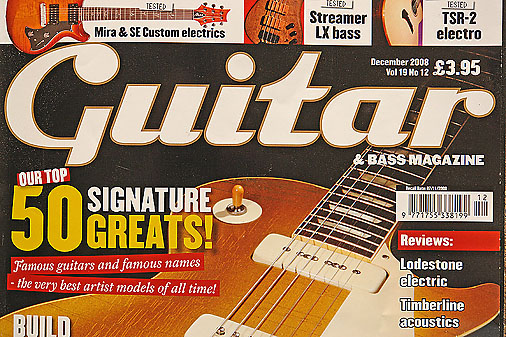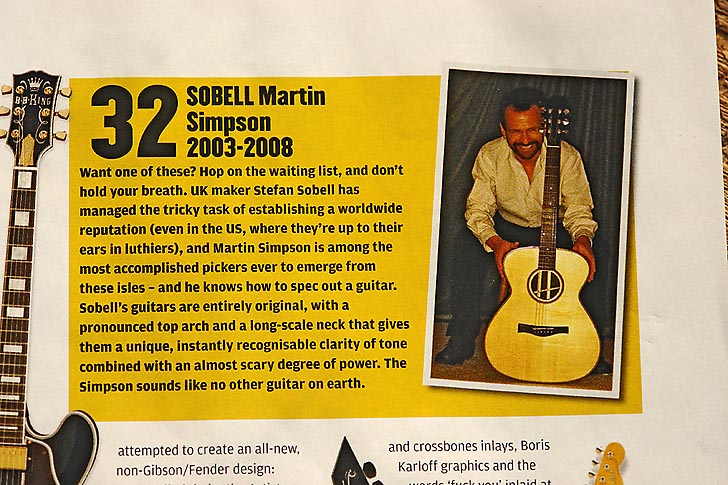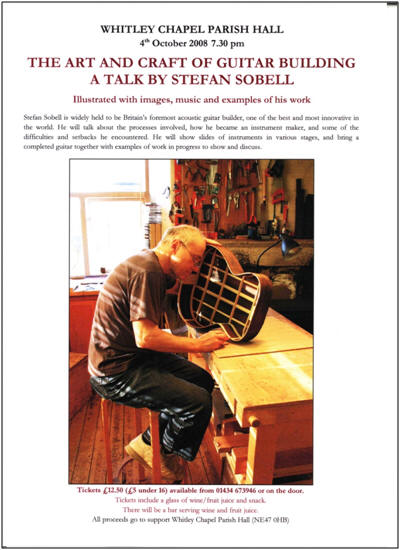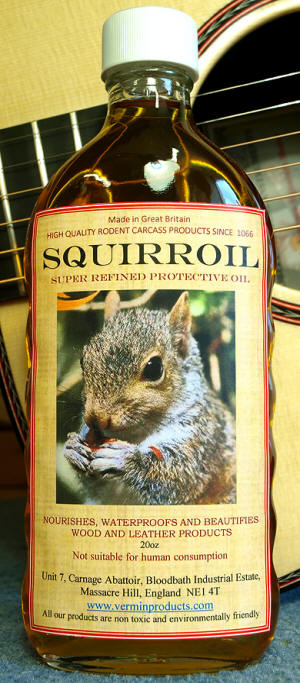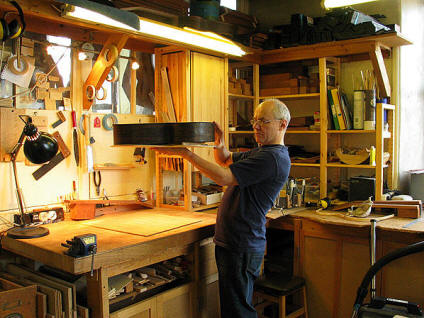21 January 2008
W.I. Talk
I recently talked to the local Whitley Chapel Women’s Institute about guitar building. They were thoroughly involved, asking questions throughout the talk and many more at the end.
I’d taken some side bending photos to use as part of my presentation, and while they’re not strictly news, here they are.
I start by quickly bending a side to approximately the correct shape on the electrically heated bending pipe. Then it goes into the Fox bender (old version, heated perfectly satisfactorily by three light bulbs) for around 30 mins, before the power is switched off and the side left in place overnight. The next day the side should be close to the correct shape but I take it back to the bending pipe to get it exactly right, so the slightest pressure holds it snug against the mould.
The wood is damped for the first two stages (though not soaked) and if necessary, also damped for the final stage.



Here are the sides joined at the heel and tail, and then in the mould ready for fitting the back.


Audition
Whilst Rens and Martin Simpson seem not to be following on up their musical collaboration (news item 30 September 2007), Martin fell in love with and bought the New World guitar. He plans to use it at home and for writing songs rather than playing on stage.

Martin playing New World guitar

Rens walking above Devilswater
Neck shaping
Again, not really news, but here are pictures showing how I shape a guitar neck.

Neck marked out, shaped first with spokeshave, then with rasps
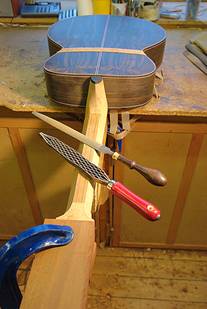
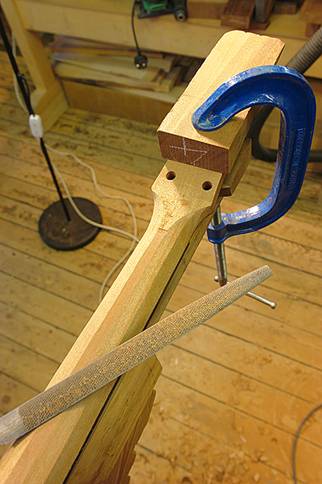
Shoulders taken off with rasp
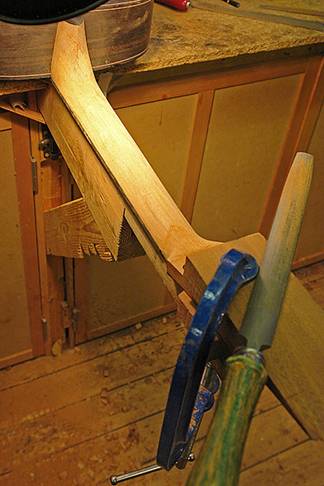
Neck taken to final shape with fine file
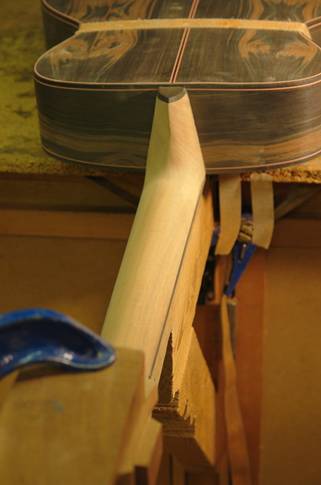
Neck sanded smooth, working down through the grades
Looking at these pictures brings home to me how time consuming a method this is, when all factory and many luthier made guitars are shaped by (sometimes CNC controlled) routers. Along with most other aspects of my guitar building, this system can appear unnecessarily slow and painstaking.
But there are distinct advantages to building this way. I can easily adapt each process to give the specification asked for by the customer. Also, I’m watching the wood and how it works so I can make allowances for, and adapt to, different wood characteristics.
There’s another less direct benefit. The time spent working with and looking at the wood, and concentrating on the instrument I’m building is often the time when I have ideas and insights into construction and design.
